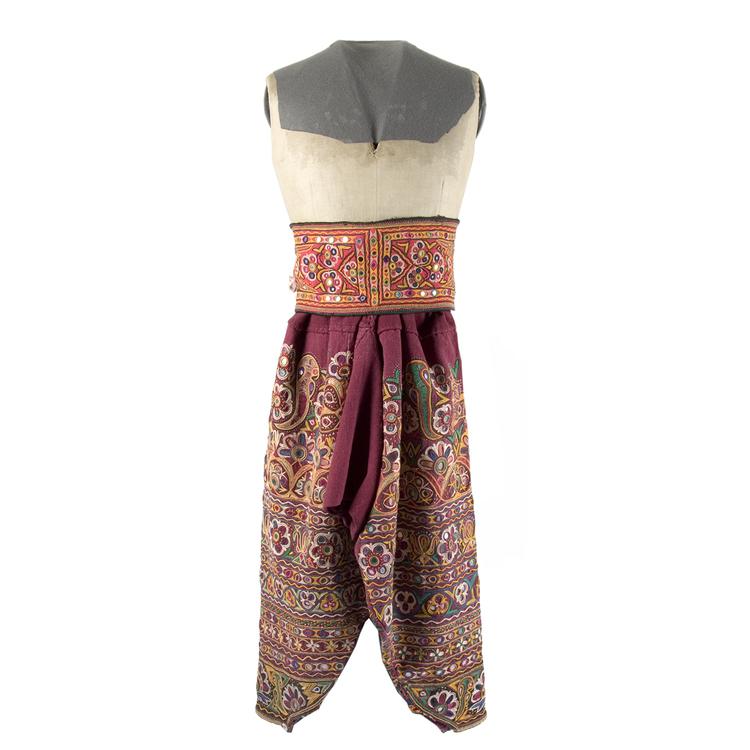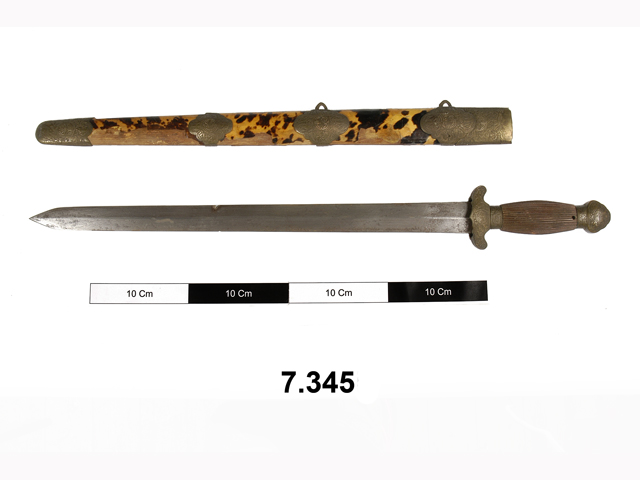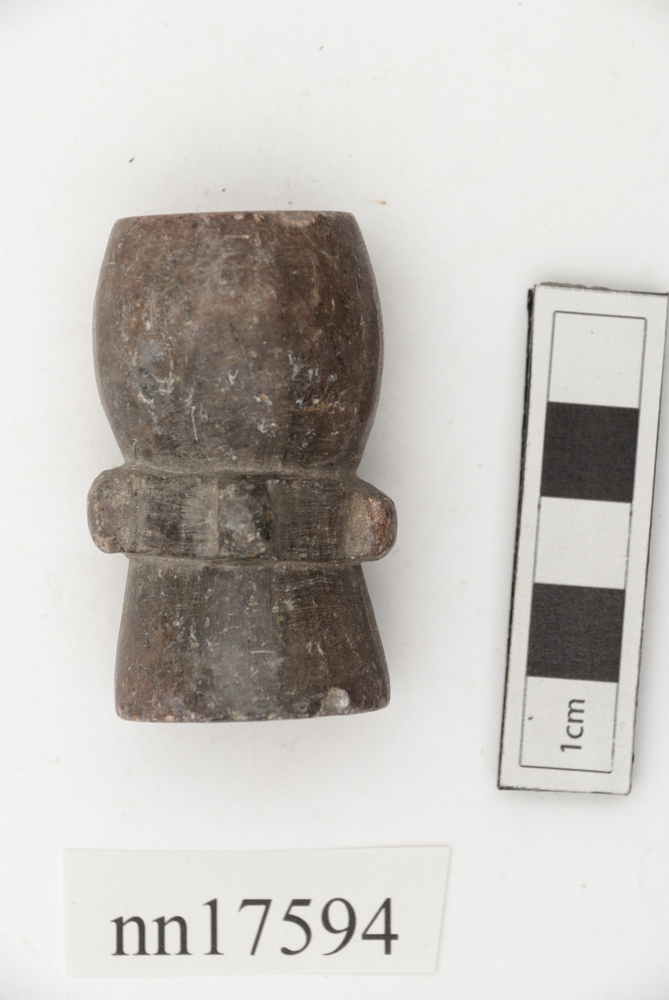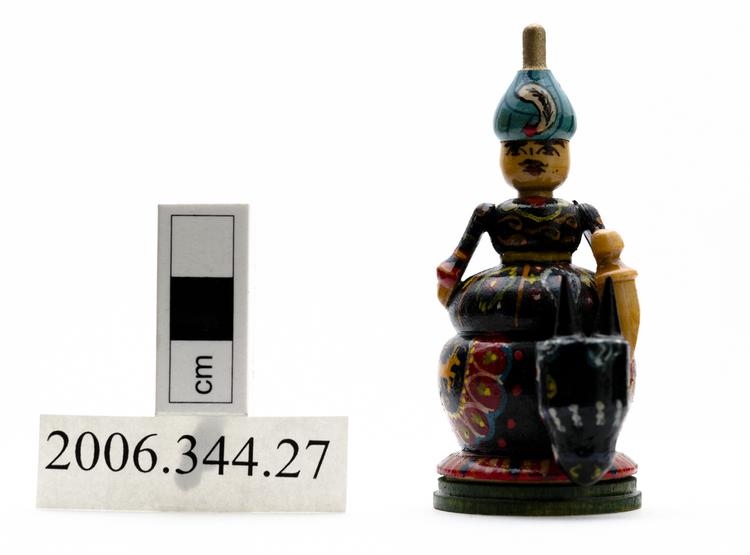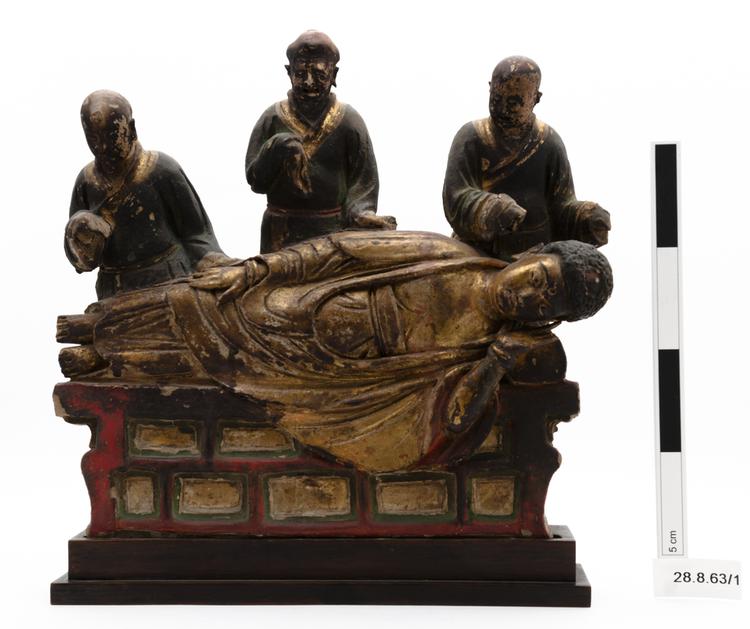
Figure representing the death of the Buddha. Buddha lying horizontally on a couch, behind him stand three disciples. Painted in gold, red, green and black. The group rests on an ebony stand with back support.
This is the Buddha Shakyamuni (Gautama Buddha/Siddhartha Gautama) in parinirvana (also known as mahaparinirvana or great complete nirvana) i.e. the physical death or final nirvana of the historical Buddha at the age of eighty (supposedly of food poisoning) and his final passing from samsara. The image (images of this type are also known simply as the Reclining Buddha in English) represents the Buddha Shakyamuni during his final illness. Reclining Buddha figures have appeared in many media, and can vary widely in scale – with some gigantic stone figures to be found in South and East Asia. There are various dates given for the date of the Buddha’s death but either 400 BCE or 483 BCE are widely used. The Buddha died at a place called Kushinagar in present day Uttar Pradesh, now a major Buddhist pilgrimage site. The image appears to be of lacquered and gilded wood. The Buddha is shown with three followers or disciples attending. Images of the Buddha in parinirvana can either depict the Buddha alone, or as here, attended by disciples, or in some cases, gods, animals and disciples all in lamentation at his passing. Since they appear to where the robes of monks and have shaven heads, it’s fairly safe to assume they’re ordained monks (Bhikkus in Sanskrit) and probably include Ananda, and possibly Kasyapa. It seems to be reasonably large in scale at approximately 25cm (?) and would probably have been intended for use on an altar of some description, either as an individual figure grouping, as here, or possibly as part of a larger assemblage. You might also examine the back and base to see whether there is any evidence of a sealed insertion point which would suggest that the image had been consecrated in some way in order to give the image efficacy (the items inserted into a statue typically include sutra texts, incense, or other symbolic or materially valuable items). Worth also look closely in the same places for an inscription of any sort. If you find anything let me know. The Ming (1368-1644) dating for this object is certainly possible, though equally it might also be later, of mid to late Qing (1644-1911) date. Only scientific analysis of the core substrate (which I’m assuming is wood) will give you a definitive answer. The style of the couch on which the Buddha lies is vaguely Sino-Tibetan in style. If indeed it did come from Shanxi province then it’s interesting to speculate that it may be linked with Wutai Shan in some way. Wutai Shan is a major Buddhist pilgrimage site not only in Shanxi but also in China, and there are numerous Buddhist temples and shrines there. Kevin McLoughlin July 1st 2015.



